Elizabeth Mitchell's Blog, page 3
June 20, 2014
Getting ready to read with Emma Straub in Brooklyn on 6/24
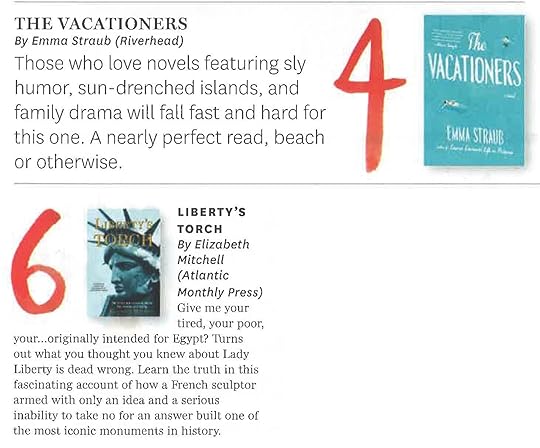 I am very excited to be reading with Emma Straub for a PLG Arts event in Brooklyn. She has written a novel, The Vacationers, that has gotten all kinds of love, and we will be in our home borough. We also happened to be #6 and #4 on O magazine’s 15 books to read this summer.
I am very excited to be reading with Emma Straub for a PLG Arts event in Brooklyn. She has written a novel, The Vacationers, that has gotten all kinds of love, and we will be in our home borough. We also happened to be #6 and #4 on O magazine’s 15 books to read this summer.
Come out for a drink and get a start on the list:
Tuesday, June 24 at 7:30
Inkwell Jazz Comedy Cafe
408 Rogers Ave, Brooklyn, New York 11225
June 15, 2014
Happy Father’s Day to those who create or procreate
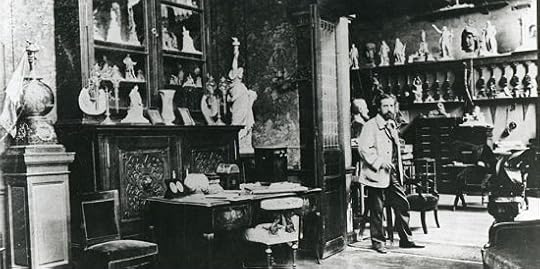 Frédéric Auguste Bartholdi, the artist who gave us the Statue of Liberty, never had children of his own, but he certainly gave birth to a work that delivered great meaning to the world. He conceived the colossus, brought her to her feet, and schemed and labored to ensure her long life. Over more than a century, his “big daughter,” as he called her, inspires immigrants and activists, soldiers and satirists, thrill seekers and entertainers.
Frédéric Auguste Bartholdi, the artist who gave us the Statue of Liberty, never had children of his own, but he certainly gave birth to a work that delivered great meaning to the world. He conceived the colossus, brought her to her feet, and schemed and labored to ensure her long life. Over more than a century, his “big daughter,” as he called her, inspires immigrants and activists, soldiers and satirists, thrill seekers and entertainers.
When his wife lamented their childishness, he comforted her with the words: “Children? But have we not already made a girl together, Liberty?”
June 14, 2014
What would drive you to pitch the idea of a colossal statue to a country you had never visited?
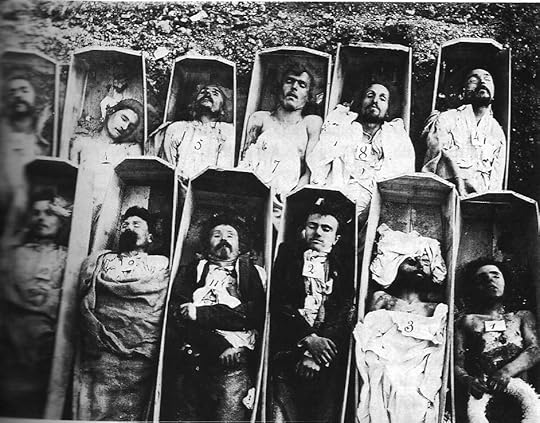 Imagine you’ve never been to China. You don’t even know a single soul in China. And yet you set off to pitch the Chinese people on your idea for a colossal statue intended to be taller than their tallest skyscraper. Frédéric Auguste Bartholdi did exactly this when he came to America in 1871 to pitch a nation on the Statue of Liberty. It’s hard to fathom such hubris.
Imagine you’ve never been to China. You don’t even know a single soul in China. And yet you set off to pitch the Chinese people on your idea for a colossal statue intended to be taller than their tallest skyscraper. Frédéric Auguste Bartholdi did exactly this when he came to America in 1871 to pitch a nation on the Statue of Liberty. It’s hard to fathom such hubris.
Key background though is that Bartholdi was not setting sail during a period of French calm. The Franco-Prussian war had only just ended, his beloved home region of Alsace given away in the negotiations. Paris, where he had been living for more than two decades, still smoldered from fires set by the Communards in a gruesome battle with the French government known as The Bloody Week. Ten thousand French citizens had been slaughtered in the streets.
An exile from Alsace, Bartholdi arrived back to Paris two days after the last Communard holdouts faced a firing squad against the wall of the Père-Lachaise cemetery. Bartholdi found “houses in ruins, facades torn to pieces. Troops have occupied my house. Holes in the courtyard walls go through… not a pane of glass left.”
When he set sail, only 40 passengers wandered the ship intended to carry 300. Few people had the money or will or optimism to head off on a voyage. Yet Bartholdi carried the designs for a statue he had conceived for Egypt, hoping to find a new buyer.[image error]
June 7, 2014
How do writers write? A stop on the “My Writing Process Blog Tour”
 Thanks to Darcey Steinke for asking me to take part in the MY WRITING PROCESS BLOG TOUR, a path linking writers’ blogs in a discussion about approaches to fiction and nonfiction. Darcey has a new novel, Sister Golden Hair, coming out in the fall, and you can find Darcey’s answers to the four questions here:
Thanks to Darcey Steinke for asking me to take part in the MY WRITING PROCESS BLOG TOUR, a path linking writers’ blogs in a discussion about approaches to fiction and nonfiction. Darcey has a new novel, Sister Golden Hair, coming out in the fall, and you can find Darcey’s answers to the four questions here:
At the bottom, find the link to novelist Elliott Holt’s blog for her responses next week. Here are my responses to the questions:
1) What are you working on?
I am working on a novella-length nonfiction piece about a turn-of-the-century New York woman. She managed to fight crime, save the innocent from death row, find the hidden corpses of murder victims, write treatises, travel Europe, Syria and Russia alone on a mule, dodge assassination attempts, and combat entrenched government corruption all while relatively young. She makes us so-called liberated women look entrapped and lazy. I am also finishing up a proposal for the next book I would like to write.
2) How does your work differ from others of its genre?
I try to give my historical pieces a strong narrative line because ultimately I enjoy story. Conveying fact in this way, it seems to me, gives a more accurate sense of history, the tension of not knowing whether the crime would be solved or the mammoth statue would be built, or girls would keep disappearing by the hundreds from New York streets.
Hopefully, if people read my new book Liberty’s Torch, they will have the same sense that the creators did of uncertainty: that the statue might never make it out of the French workshop for lack of financing. It might go down in a shipwreck during transport. It might get toppled by a hurricane and live in legend rather than become the icon we know.
I also enjoy finding the magical moments of history, the glimmers of coincidence, or unusual images, the strange motivations.
3) Why do you write what you do?
I don’t have one reporting beat. I write all sorts of pieces, from a book review of a Yiddish epic to a profile of a supermodel, from a biography of a would-be president to sagas from the horse world. I enjoy trying to understand new terrain, to enter the worldview of people with passions and drive very different from my own.
I’ve been writing narrative history lately because I stumbled upon a few stories that intrigue me. I uncovered the tale of the first female detective in U.S. history; she deserves recognition and I enjoyed helping her get it. Then I came upon Bartholdi’s diaries and letters from his first trip to America to pitch the Statue of Liberty. The New York Public Library holds this trove. I was intrigued by how he clearly seemed a lone wolf in this project. He was coming to America, to a land he had never visited, to meet people he never knew before to pitch them on creating the slightly revamped work he had originally designed for Egypt. The surprise that Liberty wasn’t originally designed for America compelled me forward, and Bartholdi’s amusing and dramatic personality kept me going.
4) How does your writing process work?
I tend to come across an intriguing shard of a story while working on a different piece. I make a note of it, and if the idea still tugs at me months later, I go back to it. Inevitably, I find the idea is so much richer than I could ever have dreamed. I research the heck out of it, then work out a fairly solid outline. That helps rein in the nearly irresistible urge to follow every fascinating tangent in the archives. I begin writing. When I realize I need to understand something better, I research again. I spend a huge amount of time trying to nail down details. I then go over the manuscript many, many times, trying to smooth the edges.
Next up, the week of June 12th, check out this blog: Elliott Holt. Elliott Holt’s fiction and non-fiction have appeared in the New York Times, Virginia Quarterly Review, Kenyon Review online, The Millions, and elsewhere. She is the recipient of a Pushcart Prize and the runner-up of the 2011 Pen Emerging Writers’ Award, and her first novel, You Are One of Them, was a New York Times Book Review Editors’ Choice.
May 31, 2014
Colmar: The gingerbread town where Bartholdi was born
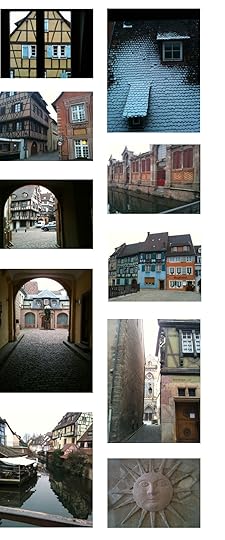
I was lucky enough to visit Colmar, the town where Bartholdi was born, twice during the time I researched Liberty’s Torch. His childhood home has been transformed into an impressive museum. On one floor, the historian, Régis Hueber, presided over Bartholdi’s archive of letters and diaries.
The town shows plenty of signs of both French and German influence, having been absorbed into one or the other nation over its history. The top two photos show the view from the small apartment I rented while researching. The warehouse structure on the canal is the covered food market, which served as an ad hoc ammunition storage facility during the Franco-Prussian war; at that time Bartholdi was called upon to organize the ragtag fighting force of townspeople as commander of the National Guard.
The photo toward the bottom, peering in through the tunnel toward a statue of Les grands soutiens du monde is the view into Bartholdi’s courtyard.
Editing
Elizabeth Mitchell was executive editor of George, having started with the magazine as a senior editor before George’s launch in 1995. Prior to that, she worked as features editor at SPIN. She has consulted on screenplays and treatments, coached book proposal writing, and edited white papers.
Here are links to a few of her book editing projects:
Upcycle: Beyond Sustainability – Designing for Abundance, by William McDonough and Michael Braungart, forward by President Bill Clinton.
The Right Words at the Right Time, by Marlo Thomas.
Domestic Affairs, a novel by Bridget Siegel.
May 30, 2014
The Upcycle: Beyond Sustainability–Designing for Abundance
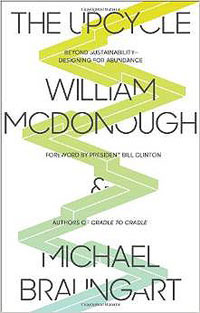 The Upcycle is the eagerly awaited follow-up to Cradle to Cradle, one of the most consequential ecological manifestoes of our time. Now, drawing on the lessons gained from 10 years of putting the Cradle to Cradle concept into practice with businesses, governments, and ordinary people, William McDonough and Michael Braungart envision the next step in the solution to our ecological crisis: We don’t just use or reuse resources with greater effectiveness, we actually improve the world as we live, create, and build.
The Upcycle is the eagerly awaited follow-up to Cradle to Cradle, one of the most consequential ecological manifestoes of our time. Now, drawing on the lessons gained from 10 years of putting the Cradle to Cradle concept into practice with businesses, governments, and ordinary people, William McDonough and Michael Braungart envision the next step in the solution to our ecological crisis: We don’t just use or reuse resources with greater effectiveness, we actually improve the world as we live, create, and build.
May 29, 2014
The Right Words at the Right Time
A collection of personal revelations from over 100 of today’s greatest luminaries whose lives were changed by hearing the right words at the right time. Includes Mohammad Ali, Steven Spielberg, Toni Morrison, Jack Nicholson, Tom Wolfe, Hillary Clinton, the Dalai Lama, President Jimmy Carter, Ted Turner, Justice Ruth Bader Ginsburg, Paul McCartney and more. A New York Times #1 bestseller.
Three Strides Before the Wire: The Dark and Beautiful World of Horse Racing
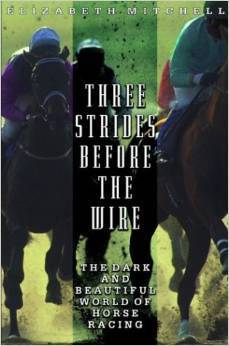
From Amazon.com:
Now in paperback, reporter Elizabeth Mitchell introduces her readers to the mysterious, mercurial world of horse racing in a book that’s as fast-paced and colorful as a day at the track. Focusing on the 1999 Derby winner Charismatic, Mitchell traces this horse’s amazing and ultimately tragic story, from the birth of a foal through its surprising rise to fame. Mitchell also follows the major players in Charismatic’s life, including the family who bred him, the trainer, the owners, and the famed jockey Chris Antley, whose own story is more tragic than that of his horse. Through these interlocking stories a sense of familiarity with the key players in the industry evolves, as well as a greater understanding of the heart and soul of a sport that has fascinated human beings for centuries.
Buy the book on amazon.com »
The Genius of Cecile Richards
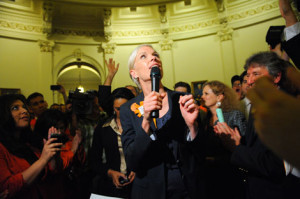
Planned Parenthood president Cecile Richards heard whispers that the Susan G. Komen foundation would stop funding Planned Parenthood’s breast cancer screenings from an anti-choice blog in early December. But she shrugged it off as the kind of bullying rumor that often circulates in her world. (Until Planned Parenthood, she says, “I had never worked with an organization where there were people that literally got up every day trying to figure out how to keep us from doing our work.”) Then the Komen foundation president called just before Christmas to say it was true. “It came as a total surprise,” says Richards, who requested a meeting with Komen’s board to revisit the matter but was denied.
It was only after an Associated Press reporter broke the story in late January that Richards let loose the deluge. “Disappointing news from a friend” was the subject line on Richards’s January 31 late afternoon e-mail to more than a million supporters. The first Facebook posting on the subject received 2,438 shares.
Four days later, Planned Parenthood boasted $3 million in new funding; 32,000 new Facebook fans; 22,000 people who “shared” the freshly inaugurated Planned Parenthood Facebook badge, leading to upward of 100,000 new viewers of the site; the very public support of New York Mayor Michael Bloomberg, who donated $250,000 to the organization; vast television and radio exposure; and… the Komen funding back in place.
How exactly did Cecile Richards pull off this trick?
Read more at thenation.com »



